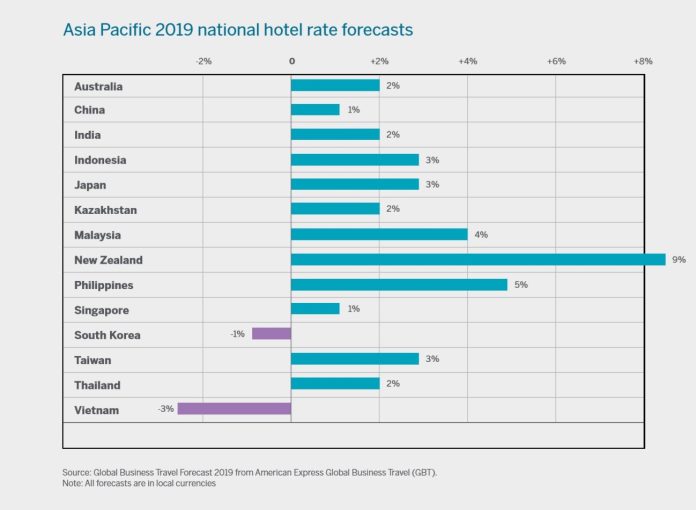The Hotel Monitor 2019, published by American Express Global Business Travel (GBT), finds geopolitical factors along with global, regional and local economics driving a diverse range of conditions for those negotiating hotel rates in key business destinations. The first in a series of Monitor reports, Hotel Monitor 2019 was created by the Global Business Consulting team at GBT to support buyers ahead of the hotel request for proposal (RFP) season.
The report includes a 2019 pricing forecast for 150 key cities around the world, plus a white paper on accommodations program optimisation.
Traveller security and political unrest are expected to be catalysts for significant rate fluctuations globally, and demand for more security-compliant properties is growing – particularly in upscale hotels. Global policy trends, such as the impending Brexit, and changes to the NAFTA trade agreement, are also expected to impact trade and travel activities.
The Asia Pacific region is anticipated to account for nearly two-thirds of global growth, with around 5.6 per cent GDP growth in 2018 and 2019. This is reflected in projected hotel rate increases, and the Monitor finds similarly moderate rises in Latin America where the economy continues to improve.
Globally, growing demand for hotel supply often outpaces room availability. Limited supply growth combined with steady demand is boosting rates in many European destinations. However, in the Middle East, over-supply and other factors are pushing prices down in some Gulf states. North American hoteliers report increases in bookings and revenues, partly driven by strong business travel and group growth; rates are predicted to rise across the continent.
Harris Manlutac, Head of Global Business Consulting APAC, American Express GBT said, “As we enter hotel RFP season, overarching global and market tendencies will play a critical role in the operational and financial success of travel programs,” “Reviewing how others have adapted to changing business conditions provides an important opportunity to identify best strategies and ensure time and resources are utilised in the most cost-efficient way possible.”







